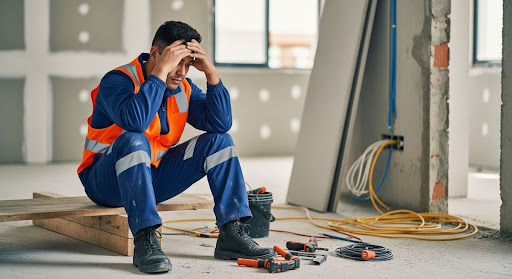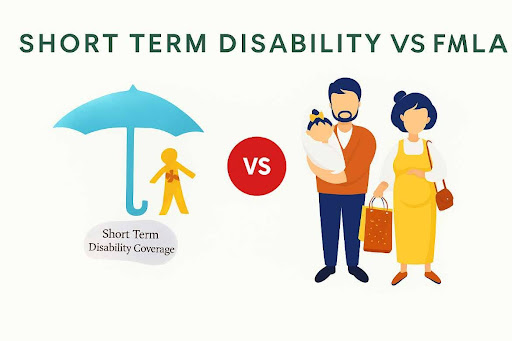Asbestos was widely used in construction materials and insulation products until its dangerous health effects became well-known. If you’ve accidentally sanded asbestos-containing materials (ACMs), you might be wondering, “Am I in trouble?”
The answer is nuanced and depends on several factors, including how much asbestos was disturbed, your safety precautions, and whether you live in a jurisdiction with strict regulations on handling asbestos. In this article, we’ll break down the potential health risks and legal implications, ensuring that you can make informed decisions moving forward.
What Are the Risks of Sanding Asbestos?
Sanding asbestos-containing materials releases tiny fibers into the air, which can be inhaled. These microscopic fibers are dangerous because they can become embedded in the lungs, leading to serious conditions such as:
- Asbestosis: A chronic lung disease caused by inhaling asbestos fibers.
- Mesothelioma: A rare, aggressive cancer affecting the lining of the lungs, abdomen, or heart.
- Lung Cancer: Prolonged exposure to asbestos fibers increases the risk of lung cancer.
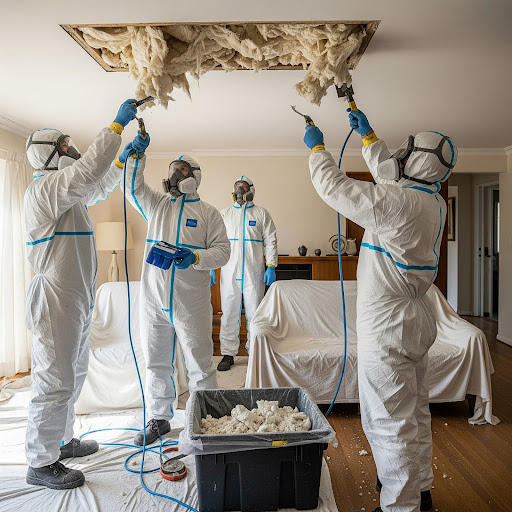
It’s important to note that these diseases typically develop after prolonged exposure, and symptoms may take years to appear. However, disturbing asbestos by sanding can immediately elevate the risk of inhalation, especially in a poorly ventilated area.
Am I Legally Responsible for Sanding Asbestos?
Whether or not you’re in legal trouble depends on where you live and how you handled the situation. In the United States, there are strict regulations under the Occupational Safety and Health Administration (OSHA) and the Environmental Protection Agency (EPA) to control asbestos exposure. Here’s a breakdown of potential legal consequences:
1. Homeowners and DIYers
If you’re a homeowner who unknowingly sanded asbestos while completing a DIY project, there may not be immediate legal ramifications, provided the disturbance was minimal, and you followed proper asbestos removal protocols once the issue was discovered. However, if asbestos removal is necessary, it must be handled by professionals to avoid further exposure and fines.
2. Contractors and Renovation Companies
For contractors, disturbing asbestos is a more serious issue. OSHA mandates that contractors must notify workers of the presence of asbestos and take necessary precautions, such as sealing off work areas, providing protective gear, and using proper disposal methods. Failure to comply with these regulations could lead to fines and penalties.
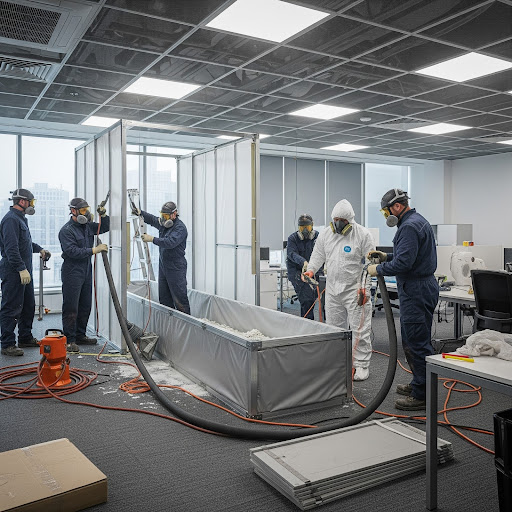
3. Environmental Regulations
If the asbestos disturbance occurred in a commercial or public building, or if you didn’t properly contain and dispose of the material, you could face violations under EPA regulations. Disposing of asbestos improperly (e.g., throwing it in the regular trash) can result in steep fines and other legal consequences.
How Can You Tell If You Have Sanded Asbestos?
If you suspect that you’ve sanded asbestos-containing material, it’s critical to stop work immediately and assess the situation. Asbestos-containing materials often appear in areas such as:
- Ceiling tiles
- Insulation
- Flooring (vinyl or tile)
- Cement sheets (used in roofing or siding)
However, it’s difficult to visually identify asbestos just by looking at it. The only way to confirm if a material contains asbestos is through professional testing. If you’re uncertain, hire an asbestos professional to conduct a survey before continuing any work.
What Should You Do If You Sanded Asbestos?
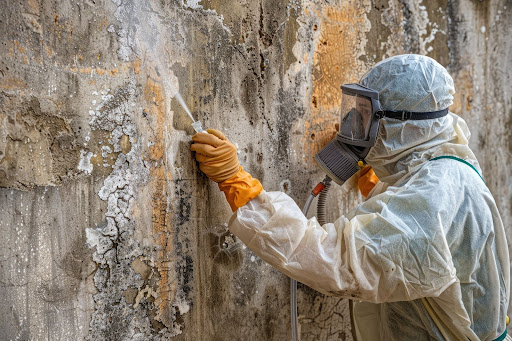
If you have already sanded asbestos-containing materials, here are immediate steps to take:
- Ventilate the Area: Open windows and use fans to blow air outside, ensuring that the area is well-ventilated. This reduces the concentration of asbestos fibers in the air.
- Stop Work: Cease all activities immediately to prevent further disturbance.
- Avoid Using Household Cleaning Products: Do not try to clean the area with a regular vacuum or broom, as this could spread fibers into the air. Use a wet cloth to gently wipe down surfaces if cleaning is necessary.
- Call a Professional: Contact a licensed asbestos removal company to assess the situation and remove the material safely.
Remember, asbestos exposure is dangerous, and it’s always safer to let certified professionals handle removal.
Also Read: The Permissible Exposure for Asbestos
Frequently Asked Questions
1. What Should I Do If I Think I’ve Been Exposed to Asbestos?
If you suspect that you’ve been exposed to asbestos, it’s important to monitor your health over time. The symptoms of asbestos-related diseases often take years to show up. If you develop symptoms like persistent coughing, chest pain, or shortness of breath, consult with a healthcare professional who can monitor your condition.
2. Can I Remove Asbestos Myself?
In most cases, asbestos removal should be left to professionals due to the serious health risks involved. If you’re a homeowner, there may be exceptions for small amounts of non-friable asbestos, but always check local regulations. It’s best to contact a certified asbestos removal company to safely handle the removal and disposal.
3. How Can I Prevent Asbestos Exposure During Renovations?
Before beginning any renovation work, always conduct a survey to determine if asbestos-containing materials are present. If they are, hire a licensed professional to remove or encapsulate them. This ensures that asbestos fibers are not released into the air during the renovation process.
4. What Happens If Asbestos Is Not Properly Disposed Of?
Improper disposal of asbestos is illegal and poses a significant environmental and health risk. Failing to comply with disposal regulations can result in hefty fines and environmental contamination. Always use licensed disposal services for asbestos-containing materials.
Conclusion: Don’t Take Chances with Asbestos
In conclusion, if you’ve sanded asbestos-containing materials, it’s essential to assess the situation carefully and take immediate action. While you may not face legal trouble if proper protocols are followed, there are significant health risks involved.
Be sure to consult with professionals who can handle the safe removal and disposal of asbestos. Taking the necessary precautions can protect not only your health but also ensure compliance with local laws. Always prioritize safety—because when it comes to asbestos, there’s no room for error.

